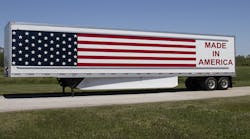In the mid-1990s, many U.S. manufacturers began moving their operations to countries like Mexico, the Philippines and China and Taiwan in pursuit of low labor costs.
The outmigration was still in full swing in the early 2000s, when I took a job as plant manager for a locally owned (Northeastern U.S.) ophthalmic-lens manufacturer. Soon after I started, private ownership sold its interest in the business to explore other technologies. Competition in polycarbonate-based lens manufacturing had exploded, and the owner either could not or did not want to make the capital investment needed to stay ahead of the rapidly growing market.
Enter the second-largest global manufacturer of ophthalmic lenses at the time. This organization was not so interested in my company’s technology or its unique market niche. Its interest was the financial benefits it could accrue from adding our operations to the manufacturing sites within its portfolio. This global manufacturer had an annual revenue near $1 billion, yet struggled to make appreciable profit, so it turned to my organization with great interest.
Lean for the Win
At the time of purchase, my company had rapidly grown from about $12 million annually to greater than $20 million in revenues (demonstrating the rapid market expansion and opportunity). More importantly, the net profits that accrued from this revenue were of the magnitude of 75% to 100% gross margin, with net margins at or above 50%. These sort of returns were almost unheard-of in manufacturing, except in the most specialized of industries with exceptional value propositions.
We generated this value by being a very lean-focused operation offering vendor-managed inventory (VMI) to all of our customers, in addition to providing unique logistical support that allowed customers to maximize their profitability as well. Our new parent company had great interest in our ability to generate cash, but also a greatly different idea for our future.
We had been focused on serving the needs of small, independently owned optometric and ophthalmic labs and opticians, serving their own patients and clientele. Because we offered a partnered VMI and supply chain efficiency to our customer base, we shared in the high margins typically generated within the medical-device marketplace.
However, as many companies moved away from mom-and-pop-sized suppliers, low-volume, customer-centric manufacturing with high margins gave way to commodity-like manufacturing with lower operating costs and low margins that were a far cry from what our company experienced.
After many a comparison, our organization proved that by using lean capabilities and strategies, it could truly operate and out-deliver other manufacturing facilities owned by its parent company—in Tijuana, Mexico, and other offshore locations—when comparing overall costs, including shipping and availability.
Move to Asia, and Back Again
Despite our success, the parent company was far more interested in serving the growing needs of big-box retailers (volume vs. service) and moving away from a niche market that eventually would cut out the mom-and-pop optometric professional.
After several years of being forced to move away from our founding business model (service with high margins) to one that was greatly—if not totally—geared towards fulfilling the needs of big-box retailers who took a disproportionate share of margin, our facility could no longer generate the hefty margins that it once delivered. Around 2007, our operation was shuttered and all production moved to Asia.
Fast forward 15 years and look where we are today. With a global pandemic hopefully now in our rearview mirror and a now erupting nuclear-possible conflict in Europe, the threats to the global supply chain grow. With the shortage of PPE during the pandemic and the semiconductor shortage, we have already witnessed the effects of offshoring on the electronics, automotive and pharmaceutical industries.
So now we have all had a taste of just what a distant and extended supply chain can manifest. With lead times for electronic components now exceeding one year or more, our national security is threatened. Meanwhile, Intel and others are spending billions to build multiple chip foundries in Ohio and other states, and there is a drive to revive manufacturing in the U.S.
Imagine if you will, what the outcome of a Russian domination of Europe and a Chinese takeover of Taiwan would be. If you think that our foreign supply chains are affected now, what could happen is a far cry from what we are experiencing currently. Many people in the U.S. have never experienced going without. It has been a long time since World War II, when U.S. consumers were unable to get whatever they wanted when they wanted. I experienced the gas rationing of the early 1970s, but not true hardship like my parents and grandparents did in the early to mid-1900s.
Make Where You Sell
I have no problem with companies doing business in foreign countries, but greatly support a “make where you sell strategy.” Using lean strategies, our company demonstrated that small business can operate and compete in the U.S. against foreign suppliers. The urgency to both fulfill demand (“I have to have it now”) and insure national security now emphasizes a return to “Make it in America” all the more.
We as a nation can do it using lean strategies. Necessity is the mother of invention. We now have the necessity to reinvent ourselves as a manufacturing-based nation, lest we become so dependent on foreign countries that do not have our best interests in mind that we compromise our freedom and independence.
Many years ago, I learned in business school that a manufacturing-based economy turns the value of a dollar seven times, while a service-based economy turns a dollar only two times. Why would we not want to return to a manufacturing-based economy? Our future and national security are in our hands. It’s time to right the mistakes we’ve made in the past and rebuild manufacturing in the United States.
Ron Jacques is a 35-year veteran within the lean, manufacturing and consulting arenas. He is a certified lean practitioner who has delivered hundreds of kaizen and transformational solutions to clients and companies within the Pharma, Medical Device, Automotive, Food/Beverage, Electronics, Military Defense, Personal Care, Consumer Durables and Capital Equipment industries.




